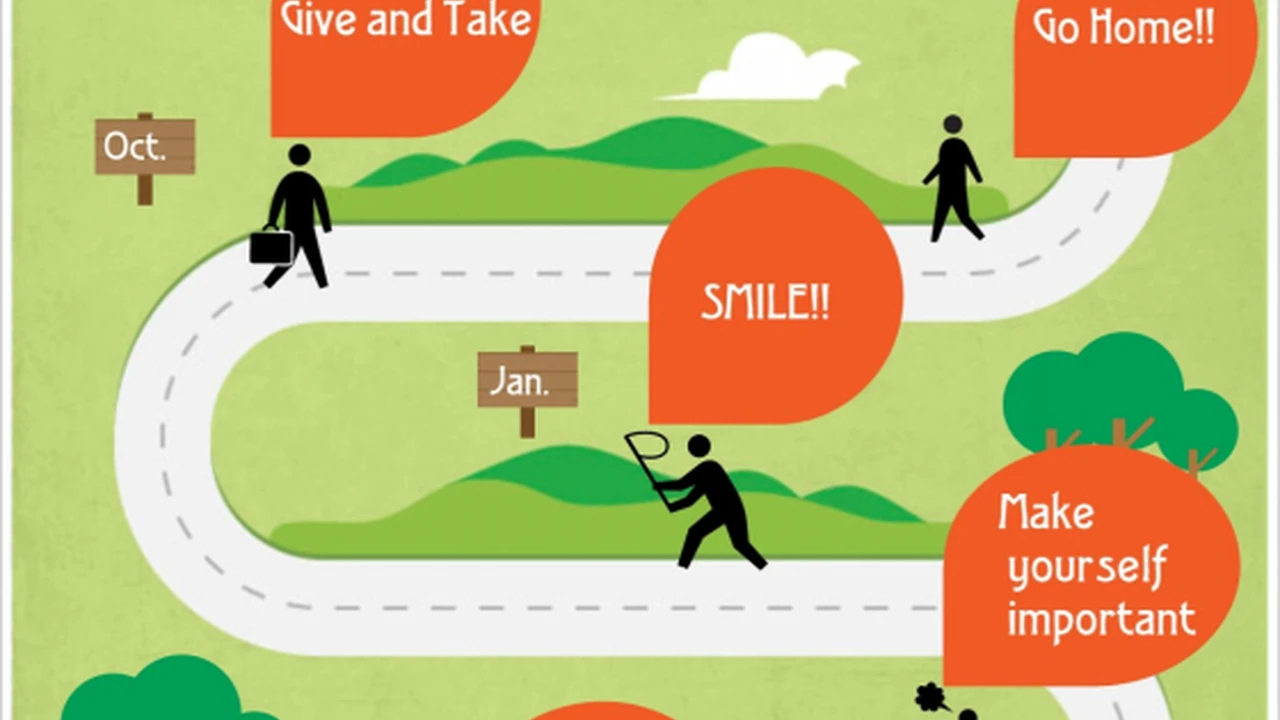Building a Consistent Learning Routine for Online Success
Learn how to build a consistent learning routine for online success. Establish habits that support your educational journey.

Building a Consistent Learning Routine for Online Success
Hey there, fellow online learners! So, you've decided to dive into the world of online education, whether it's for a new skill, a career change, or just personal growth. That's awesome! But let's be real, online learning, while incredibly flexible, can also be a bit of a wild west. Without the structure of a traditional classroom, it's super easy to get sidetracked, fall behind, or just lose momentum. That's where building a consistent learning routine comes in. Think of it as your secret weapon to not just survive, but truly thrive in your online educational journey. It's not about being rigid; it's about creating a rhythm that works for you, turning those learning goals into achievable daily habits. Let's break down how to make that happen, looking at everything from setting up your space to picking the right tools and even how to deal with those inevitable bumps in the road.
Understanding the 'Why' Behind Your Online Learning Routine
Before we even talk about 'how,' let's quickly touch on 'why.' Why is a routine so crucial for online learning? Well, for starters, it helps combat procrastination. When you know exactly when and where you're supposed to be learning, it removes a lot of the decision-making fatigue that often leads to putting things off. Secondly, consistency builds momentum. The more regularly you engage with your material, the easier it becomes to recall information and connect new concepts. It also helps manage your energy levels, preventing burnout by spreading your workload more evenly. Plus, a routine signals to your brain that 'this is learning time,' helping you get into a focused state more quickly. It's all about creating a predictable environment for your brain to do its best work.
Setting the Stage for Your Online Learning Environment
Your physical and digital environment plays a huge role in the success of your routine. It's not just about having a desk; it's about creating a space that supports focus and minimizes distractions.
Dedicated Learning Space Optimizing Your Study Area
First things first, try to designate a specific spot for your learning. This doesn't have to be a fancy home office; a corner of your living room or even a specific chair at the kitchen table can work. The key is consistency. When you sit in that spot, your brain starts to associate it with learning. Make sure it's comfortable, well-lit, and as free from distractions as possible. If you can, avoid learning in your bedroom, especially on your bed, as this can blur the lines between relaxation and study, making both less effective.
Minimizing Digital Distractions Essential Tools and Techniques
Digital distractions are the bane of online learning. Notifications, social media, endless tabs – they're all vying for your attention. Here's how to fight back:
- Turn off notifications: This is a no-brainer. Put your phone on silent or 'do not disturb' mode. Close unnecessary tabs on your computer.
- Use website blockers: Tools like Freedom, Cold Turkey, or even browser extensions like StayFocusd can block distracting websites for set periods. Freedom, for example, offers cross-device blocking and scheduled sessions, making it a powerful ally. Cold Turkey is great for those who need a more aggressive approach, even blocking applications. StayFocusd is a simpler browser extension for quick blocking.
- Consider a separate user profile: If you use your computer for both work/study and leisure, create a separate user profile for learning. This way, you only have your study-related apps and bookmarks open, reducing temptation.
- Focus music or ambient sounds: Some people find instrumental music, classical, or ambient sounds (like rain or coffee shop noise) helpful for focus. Apps like Brain.fm or Noisli offer scientifically-backed focus music and customizable ambient soundscapes. Brain.fm is a subscription service (around $6.99/month or $49.99/year) that uses AI-generated music to help you focus, relax, or sleep. Noisli is free for basic use, with a premium version (around $10/month) offering more sounds and features.
Crafting Your Ideal Learning Schedule and Habits
Now for the nitty-gritty: building the actual routine. This isn't a one-size-fits-all situation; it's about finding what works best for your unique life and learning style.
Identifying Your Peak Productivity Hours Leveraging Your Chronotype
Are you a morning lark or a night owl? When do you feel most alert and focused? Schedule your most demanding learning tasks during these peak productivity hours. Trying to force yourself to do complex problem-solving at 10 PM if you're a morning person is a recipe for frustration. Experiment a bit to figure out your natural rhythm.
Blocking Out Time The Power of Timeboxing and Calendars
Once you know your peak hours, block out specific times in your calendar for learning. Treat these blocks like non-negotiable appointments. This is where timeboxing comes in handy. Instead of just saying 'I'll study today,' commit to 'I will study Module 3 from 9:00 AM to 10:30 AM.' Use a digital calendar like Google Calendar (free) or a dedicated planner app like Todoist (free for basic, premium around $4/month) or TickTick (free for basic, premium around $2.4/month) to schedule these blocks. Google Calendar is excellent for visual scheduling and integrating with other tools. Todoist and TickTick are great for task management and can be used to schedule learning tasks with reminders.
Incorporating Breaks and Self-Care Preventing Burnout
A consistent routine isn't just about learning; it's about sustainable learning. Short, regular breaks are crucial for maintaining focus and preventing burnout. The Pomodoro Technique (25 minutes of work, 5 minutes break) is a classic for a reason. After 3-4 Pomodoros, take a longer break (20-30 minutes). During breaks, step away from your screen, stretch, grab a snack, or do something completely unrelated to learning. Self-care isn't a luxury; it's a necessity for long-term success. Apps like Forest (around $1.99 one-time purchase for iOS/Android, free Chrome extension) gamify focus by growing a virtual tree while you work, and if you leave the app, your tree dies. It's a fun way to stay committed to your focus blocks and breaks.
Review and Reflection Building in Feedback Loops
A routine isn't static. It needs to evolve. Dedicate a few minutes at the end of each week to review your learning progress. What went well? What challenges did you face? Did you stick to your schedule? What adjustments can you make for the next week? This reflection process is vital for refining your routine and making it more effective over time. Journaling or using a simple spreadsheet can help track your progress and identify patterns.
Tools and Resources to Support Your Learning Routine
Beyond just blocking time, there are fantastic tools that can enhance your routine and make learning more efficient and enjoyable.
Note-Taking and Organization Apps Keeping Your Knowledge Structured
Effective note-taking is paramount. Instead of just passively consuming content, actively engage with it by taking notes. Here are some popular options:
- Evernote: A classic for a reason. Great for capturing notes, web clippings, images, and even audio. It's cross-platform and offers powerful search. Free for basic use, premium plans start around $7.99/month.
- Notion: More than just a note-taking app, Notion is an all-in-one workspace for notes, tasks, databases, and wikis. It's incredibly flexible and customizable, perfect for organizing complex courses or projects. Free for personal use, team plans start around $8/month per user.
- Obsidian: For those who love a more interconnected, 'second brain' approach. Obsidian uses local Markdown files and allows you to link notes together, creating a web of knowledge. It's free for personal use.
- OneNote: Microsoft's free note-taking app, often overlooked. It's like a digital binder, allowing you to organize notes into notebooks, sections, and pages. Great for stylus input if you have a tablet. Free with a Microsoft account.
Flashcard and Spaced Repetition Software Boosting Memory Retention
To truly embed information into your long-term memory, spaced repetition is key. Flashcard apps leverage this principle:
- Anki: The gold standard for spaced repetition. It's highly customizable and incredibly effective for memorizing facts, vocabulary, or complex concepts. Free for desktop and Android, around $25 for iOS.
- Quizlet: More user-friendly than Anki, with various study modes (flashcards, learn, write, spell, test, match, gravity). Great for creating and sharing study sets. Free for basic use, Quizlet Plus is around $7.99/month or $35.99/year.
- Memrise: Focuses heavily on language learning but can be used for other subjects. It uses spaced repetition and gamification to make learning engaging. Free for basic use, premium plans start around $8.49/month.
Project Management and Task Trackers Keeping You on Track
For larger courses or projects, a task tracker can be invaluable:
- Trello: A visual Kanban-style board that's great for organizing tasks into lists (e.g., 'To Do,' 'Doing,' 'Done'). Free for basic use, business class starts around $5/user/month.
- Asana: More robust than Trello, offering various views (list, board, calendar) and features for team collaboration, though it works well for individual projects too. Free for basic use, premium plans start around $10.99/user/month.
- ClickUp: An all-in-one productivity platform that can handle tasks, docs, goals, and more. Highly customizable. Free for basic use, unlimited plan starts around $5/user/month.
Overcoming Common Routine Obstacles and Staying Motivated
Let's be honest, sticking to a routine isn't always easy. Life happens. Here's how to navigate those challenges.
Dealing with Procrastination and Lack of Motivation Practical Strategies
- Start small: If a task feels overwhelming, break it down into tiny, manageable steps. Even 15 minutes of focused work is better than nothing.
- Reward yourself: After completing a study session or a difficult task, give yourself a small, non-food reward. This positive reinforcement can train your brain to look forward to learning.
- Find an accountability partner: Team up with a fellow learner. Check in with each other, share progress, and motivate one another.
- Revisit your 'why': Remind yourself of your original goals and the benefits of achieving them. Sometimes, a little perspective is all you need.
Adapting Your Routine When Life Happens Flexibility is Key
A routine should serve you, not the other way around. There will be days when you can't stick to it perfectly, and that's okay. The key is flexibility and resilience.
- Don't aim for perfection: If you miss a session, don't beat yourself up. Just get back on track the next day. One missed day doesn't derail your entire journey.
- Have a backup plan: If your usual study spot is unavailable, or you have unexpected commitments, have a plan B. Maybe it's a shorter session, or a different location.
- Adjust as needed: Your routine isn't set in stone. If you find certain times aren't working, or a particular method isn't effective, don't be afraid to tweak it. Your routine should evolve with your needs.
Celebrating Small Wins Maintaining Momentum and Enthusiasm
Don't wait until you've completed an entire course to celebrate. Acknowledge and celebrate your small wins along the way. Finishing a difficult module, understanding a complex concept, or even just sticking to your routine for a week – these are all worthy of recognition. This positive reinforcement keeps your motivation high and reinforces the habit of consistent learning. Share your progress with your accountability partner, or simply acknowledge it yourself. It makes the journey much more enjoyable and sustainable.
Final Thoughts on Your Learning Journey
Building a consistent learning routine for online success isn't about being a robot; it's about creating a supportive framework that allows you to learn effectively and sustainably. It involves understanding yourself, setting up your environment, scheduling your time wisely, and leveraging the right tools. Remember, consistency beats intensity every single time. Even small, regular efforts add up to significant progress over time. So, take these tips, experiment with them, and tailor them to fit your unique life. Your online learning journey is a marathon, not a sprint, and a well-crafted routine is your best training partner. Happy learning!
:max_bytes(150000):strip_icc()/277019-baked-pork-chops-with-cream-of-mushroom-soup-DDMFS-beauty-4x3-BG-7505-5762b731cf30447d9cbbbbbf387beafa.jpg)






